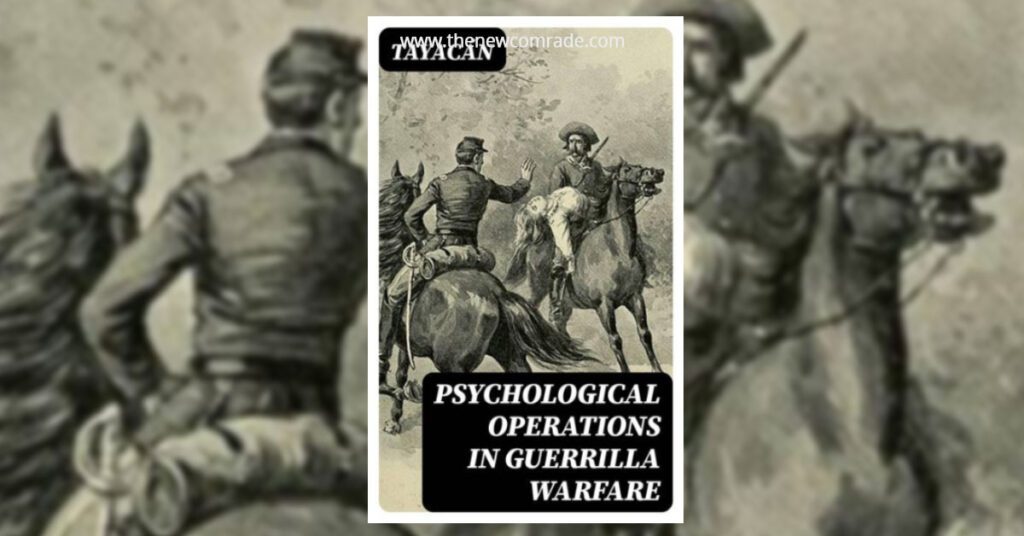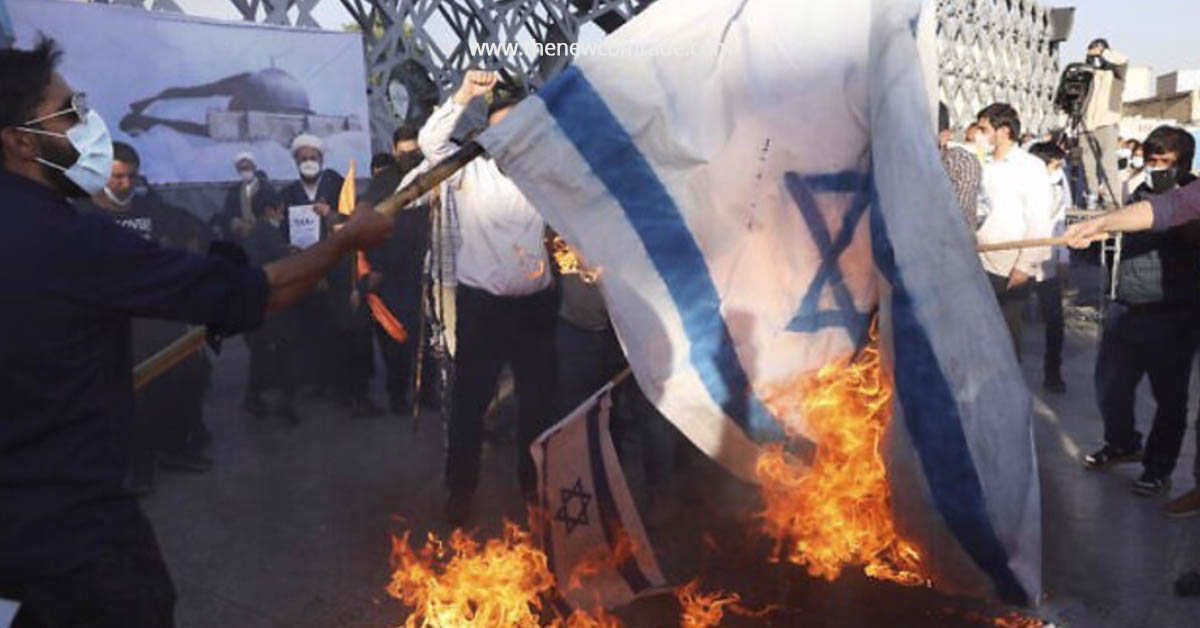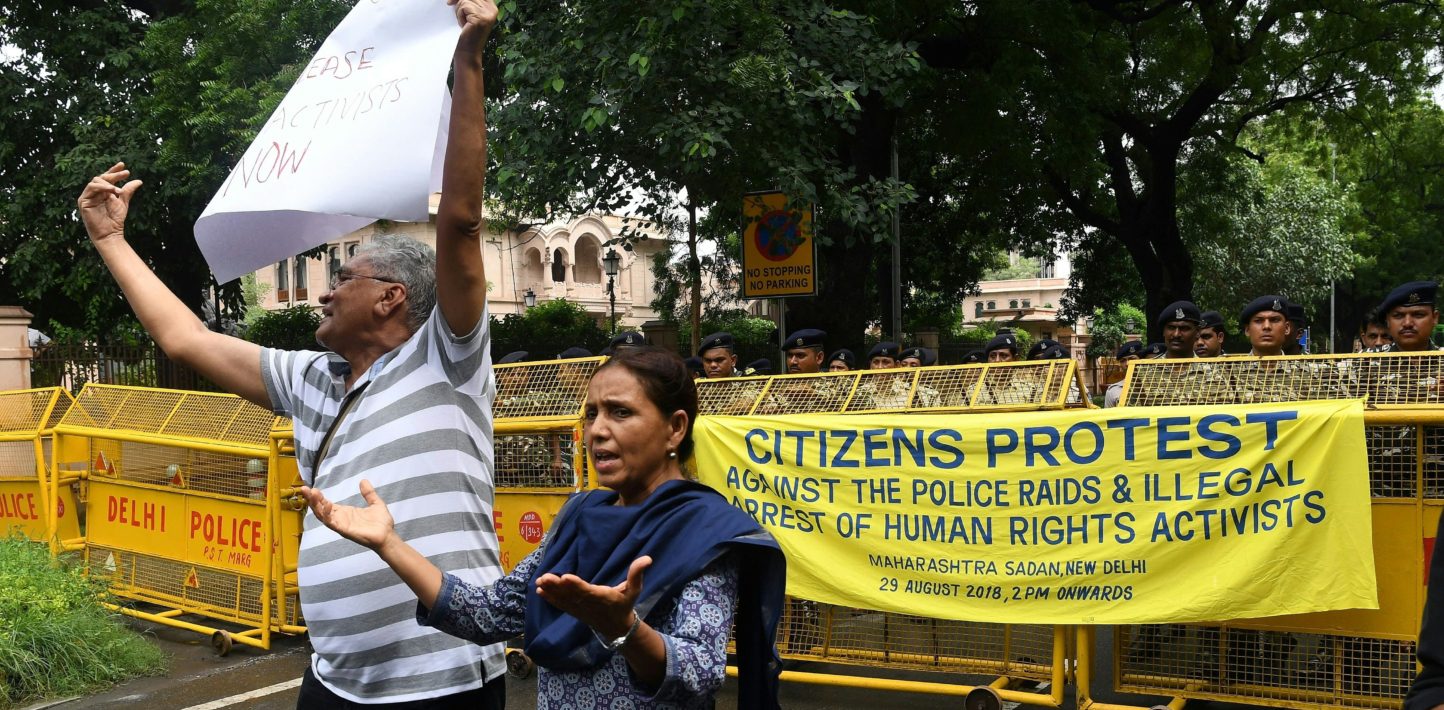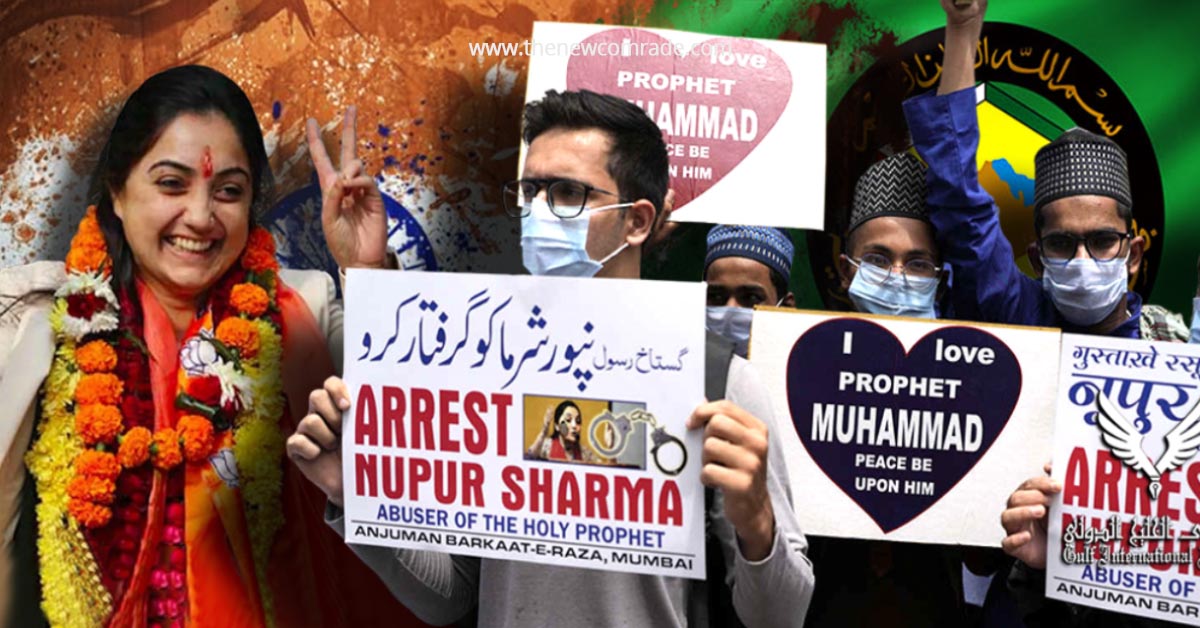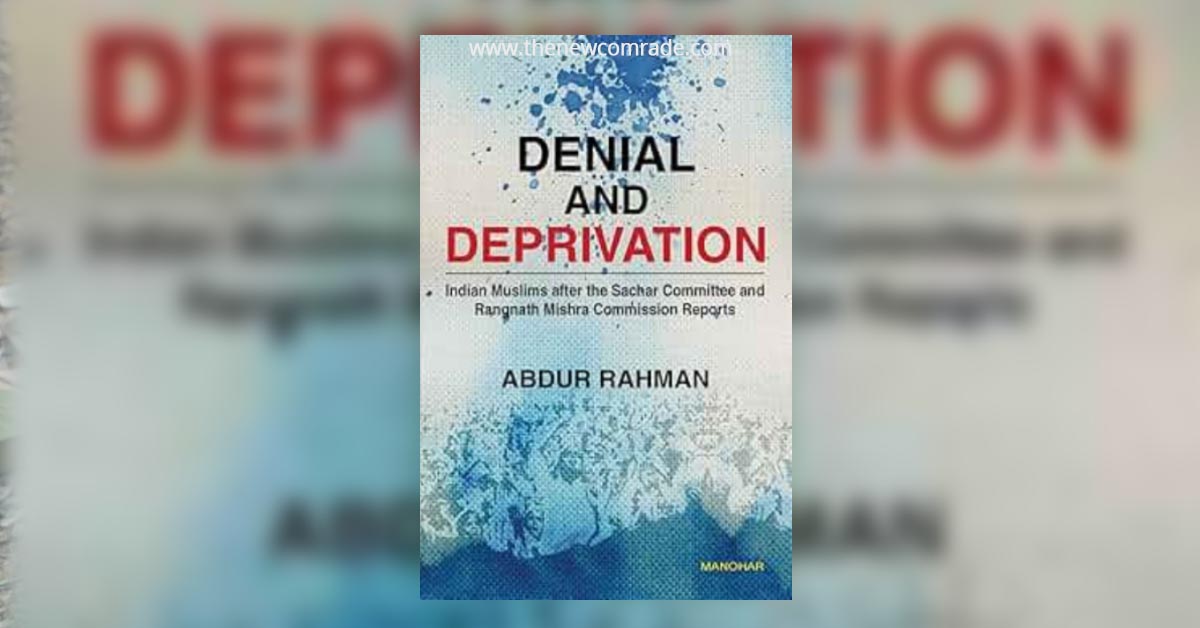Certain texts are not meant merely to be read; they are meant to be deployed. They are not mere artefacts of history but also instruments of it, designed not to document the world but to violently reshape it. The slim, chillingly pragmatic monograph known as Psychological Operations in Guerrilla Warfare is one such document. To engage with its pages is to bypass the sanitised language of diplomacy and international relations and stare directly into the operational heart of imperialist subversion. This is not a theoretical treatise on the nature of conflict; it is a field manual for the dark arts of social engineering, a step-by-step guide to dismantling a sovereign state from within by weaponising the very consciousness of its people. Its declassification and subsequent publication did not render it inert; rather, it transformed it into a permanent, damning testament to the moral vacuum at the core of U.S. foreign policy during the zenith of the Cold War.
Authored in 1983 under the pseudonym “Tayacan” by John Kirkpatrick, a seasoned CIA operative and Special Forces veteran, this manual was never intended for public scrutiny or academic debate. Its designated audience was the Nicaraguan Contras, the constellation of right-wing paramilitary groups armed, funded, and directed by the Reagan administration in its brutal proxy war against the socialist Sandinista government. When the Associated Press exposed the manual’s existence in 1984, it triggered discussion, revealing with irrefutable clarity the methods the United States was willing to employ in its global crusade. The scandal laid bare the profound hypocrisy of a state claiming to champion democracy while simultaneously authoring a playbook for terrorism, assassination, and mass manipulation.

What makes Psychological Operations in Guerrilla Warfare profoundly disturbing, even decades later, is its dispassionate, clinical tone. It reads like a technical guide for assembling a complex piece of machinery, except the machinery is a counter-revolution and the components are human fears, resentments, and aspirations. There is no ideological flourish, no appeal to principles of freedom or justice. It is a professional document for practitioners of insurgency, treating the overthrow of a government as a meticulous, psychological engineering project. This review will undertake a detailed and systematic dissection its core doctrines, its toolkit of deception and coercion, its calculated use of violence as political theatre, and its enduring, toxic legacy in a world still grappling with the ghosts of covert warfare and the modern spectre of digital disinformation. This is an exploration of a text that treats truth as a variable, morality as a tactic, and the human mind as the ultimate, decisive battlespace.
Foundational Doctrine: Colonising the Mind
The manual’s central premise is established with an unnerving and immediate clarity that reorients the entire concept of warfare. It posits that guerrilla conflict is, at its core, a political struggle whose primary theatre is not physical territory but the collective consciousness of a nation. The opening salvos are not of bullets, but of ideas. “Guerrilla warfare,” it asserts, “is fundamentally a political war.” Its operations extend beyond geographical boundaries, penetrating deep “into the political consciousness of human beings.” This reframing is absolute. The jungle, the city, the village—these are mere stages. The real war is fought for control of perception, belief, and allegiance.
From this foundation, the manual delivers its most defining and chilling thesis, a statement that serves as the Rosetta Stone for every tactic that follows: “The human mind is considered the priority objective and the most critical point in this conflict; once the mind is swayed, victory can be achieved ‘without necessarily receiving bullets’.” This elevates psychological operations, or PsyOps, from a peripheral support function to the decisive factor determining success or failure. The targets are not merely enemy combatants but the entire ecosystem of human thought surrounding the conflict: the minds of friendly troops, the minds of enemy forces, and, most critically, the minds of the civilian populace.
To execute this war of the mind, the manual introduces its ideal operative: the “combatant-propagandist guerrilla.” This is not a specialised role but a universal mandate. Every fighter must be an armed ideologue, as skilled in face-to-face persuasion as they are in marksmanship. The manual stresses that military competence is insufficient; a guerrilla’s primary weapon is their ability to articulate a compelling, logical justification for the struggle. This requires an “acute individual political awareness,” a deep-seated conviction that can be effectively communicated in any context, whether during a firefight or a shared meal in a peasant’s hut. This doctrine transforms the entire insurgent force into a decentralised, grassroots persuasion machine, constantly working to erode the state’s legitimacy one conversation at a time.
The cultivation of this political awareness is not left to chance. The manual prescribes a rigorous and continuous process of internal indoctrination through group dynamics and self-criticism. Group discussions, held at the squad level (ideally ten men for “better comprehension and control”), are meticulously designed psychological workshops. Their aims are multifaceted and deeply manipulative: to bolster morale and create ideological uniformity (“unity of thought”); to exert social pressure on wavering or weaker members; and to forge a powerful, simplified narrative of the conflict. This narrative must portray the Sandinista government as a tyrannical, illegitimate entity—a “foreignising,” “repressive,” and “imperialistic” regime controlled by Soviet and Cuban “puppets.” All international complexities are to be flattened and explained only in terms of their relevance to local guerrilla events, keeping the focus tangible and immediate. The overarching message, repeated relentlessly, is one of national liberation: the struggle is for “freedom, equality, a better economy, higher living standards, and true democracy” against the existential threat of Soviet-Cuban imperialism.
To ensure these discussions yield the desired results, political cadres are embedded within the units. Their role is not that of a lecturer but a subtle manipulator, a “private teacher” who guides the conversation so that the guerrillas feel the conclusions are their “own free decision.” These cadres must live, eat, and work alongside the fighters, fostering a sense of camaraderie that makes their ideological guidance more palatable. At the conclusion of each session, the cadre summarises the key points, leading the group to the “correct conclusions,” and covertly reports any significant dissent to the commanders. The ideal setting for these discussions is in the presence of civilians, a piece of political theatre designed to demonstrate the revolutionary nature of the cause and the guerrillas’ profound identification with the people’s aspirations.
This internal conditioning is complemented by the psychological structuring of the physical environment. Camp procedures—establishing routines, assigning responsibilities, and enforcing strict security measures like watchmen and passwords—are not merely logistical. They provide “tangible evidence of belonging,” creating a sense of order and purpose that counteracts the inherent anxiety and insecurity of guerrilla life. Every aspect of the guerrilla’s existence is thus engineered to reinforce their commitment to the cause, transforming them into a persuasive agent who can “logically justify their actions to any citizen” and powerfully counter enemy propaganda.
Armed Propaganda: Theatre of Implicit and Explicit Violence
With the guerrilla fighter psychologically primed, the manual turns to the external application of PsyOps, detailing a sophisticated strategy it terms “Armed Propaganda.” This concept is defined as the cumulative psychological impact of the armed force’s presence and actions: “every act carried out, and the good impression that this armed force causes.” The manual is quick to add a crucial, and deeply dishonest, clarification: this “explicitly does not include forced indoctrination.” The goal is to generate positive attitudes organically, through a carefully choreographed performance of benevolent power.
Central to this performance is the close identification with the people. Guerrillas are instructed to put aside their weapons and work alongside peasants in their daily tasks—farming, building, fishing—under slogans like “many hands doing small things, but doing them together.” This creates a powerful image of the guerrilla as a constructive member of the community, not an outside agitator. The handling of weapons is itself a psychological tool. Guerrillas must be courteous, explaining to curious youths that their unloaded rifles are for “winning freedom” and are, in truth, “the weapons of the people, yours.” This rhetorical sleight of hand aims to transfer ownership of the force’s power to the population, framing the insurgency as the people’s own instrument of liberation against an oppressive regime.
The manual exhibits a chilling self-awareness regarding the nature of armed presence. It acknowledges that an armed force inherently projects “implicit terror,” as the population is acutely aware that the weapons could be turned against them. The key, it advises, is to avoid “explicit coercion” at all costs, as this would shatter the carefully constructed image of the benevolent protector and alienate popular support. It quotes a Huk guerrilla leader to underscore this delicate balance: “The population is always impressed by weapons, not by the terror that they cause, but rather by a sensation of strength/force.” Armed propaganda is the art of harnessing this sensation of strength for the movement’s benefit, without tipping over into overt intimidation.
The manual provides a detailed, step-by-step playbook for how to conduct an armed propaganda operation when temporarily occupying a town. The sequence of actions is a masterclass in psychological dominance and political theatre:
1. Neutralise State Power: Destroy military or police installations and march any survivors to public places for display.
2. Isolate the Community: Cut all external lines of communication (telephone, telegraph, etc.).
3. Secure the Area: Set ambushes along access routes to delay enemy reinforcements.
4. Decapitate Local Authority: Kidnap all Sandinista officials and publicly replace them with trusted members of the local community who are part of the movement.
5. Stage a Public Spectacle: Establish public tribunals, gather the population, and subject government “personal symbols” to public shaming, ridicule, and humiliation. Infiltrated guerrilla agitators are tasked with initiating slogans and jeers to encourage popular participation.
6. Subvert and Infiltrate: Guerrillas are to mix with the population, demonstrating good conduct by paying for goods and accepting hospitality. These interactions are opportunities for face-to-face persuasion and recruitment. Meanwhile, regime sympathisers are identified and their influence is reduced by quietly pointing out their weaknesses, removing them “without damaging them publicly.”
7. Identify and Remove Threats: Sandinista informants are identified for future removal.
8. Project Fearlessness: The population is explicitly instructed to tell the Sandinista forces “EVERYTHING” about the guerrilla operation after they leave, a display of psychological dominance intended to show the guerrillas are not afraid.
9. Deliver the Narrative: The event culminates in a speech by a dynamic leader, who thanks the people, acknowledges their risks, exposes Sandinista exploitation, promises to return, and frames the struggle as a national fight for freedom against foreign imperialists.
This entire operation is designed to ensure that the guerrillas’ weapons are perceived not as a symbol of their power over the people, but as the embodiment of the people’s strength against the state. Should the use of lethal force become necessary—for instance, if a citizen is shot while trying to alert the enemy—the act must be meticulously justified. It must be framed as a tragic but necessary measure to prevent brutal reprisals against innocent townspeople, with the ultimate blame placed squarely on the “repressive system itself.” The guerrillas must then publicly emphasise their commitment to non-violence and their deep “Christian sentiments.”
This leads to the manual’s most morally bankrupt and infamous section: the selective use of violence for propagandistic effects. This is the doctrine of political assassination, sanitised with the euphemism “neutralise.” The manual advises the targeted killing of carefully selected officials—judges, police chiefs, heads of Sandinista Defence Committees (CDS)—who are already disliked by the population. The act is to be carried out in public, allowing the townspeople to formulate their own accusations against the deceased “oppressor.” This is not random terror; it is bespoke violence, tailored to local grievances to achieve a specific psychological outcome. The selection of the target and their replacement must be precise, the degree of violence carefully calibrated, and the inevitable enemy reprisals anticipated. Following the assassination, an extensive propaganda campaign must be launched to frame the Sandinista retaliation as unjust, thereby channelling public anger toward the government and, ideally, into the arms of the Freedom Commandos.

Vanguard of Subversion: Armed Propaganda Teams (APTs)
To systematically carry out this complex psychological campaign, the manual details the formation and deployment of specialised units: Armed Propaganda Teams (APTs). These small, agile teams are the vanguard of the insurgency, the “eyes and ears” of the movement, tasked with combining political consciousness-raising with armed propaganda deep within the civilian population.
The selection criteria for APT members prioritise psychological aptitude over military hierarchy. The key traits are ideological “ardour and fervour,” intellectual agility, and effectiveness in face-to-face persuasion. These teams, typically composed of six to ten members to foster camaraderie and quick reaction times, are the movement’s elite communicators. Their recruitment efforts are highly targeted, focusing on specific social groups—peasants, students, professionals, housewives—and tailoring their message to the particular grievances of each demographic (e.g., land scarcity for peasants, lack of medicine for doctors, forced conscription for students).
APT training is an intensive two-week course that focuses on method rather than content, honing the team’s ability to adapt their message to local conditions. The manual recognises that their target audience’s opinions are formed by what they see and hear, not by sophisticated political theory. Therefore, their persuasive methods are rooted in basic principles of social psychology:
• Interior Group/Exterior Group Principle: The core tactic is to subtly frame the Sandinista regime as the “false” or “exterior” group, an alien imposition on the Nicaraguan people, while positioning the Freedom Commandos as the “true” or “interior” group, the authentic voice of the nation. The goal is to inculcate these feelings so they appear to be spontaneous popular sentiments.
• “Against” is Easier than “For” Principle: Campaigns should focus on directing popular frustration against the government and its sympathisers, capitalising on pre-existing resentments rather than trying to sell a complex positive vision.
• Primary Groups Principle: Persuasion is most effective within primary social groups (family, friends, close comrades). APTs must therefore infiltrate these intimate circles, as they are the main incubators of public opinion.
The manual provides granular advice on Techniques of Persuasion, instructing cadres to be simple and concise, use popular language, employ lively examples, and master body language and tone of voice. Authenticity is key; cadres must project their own personality rather than imitate a prescribed style.
Operationally, APTs are to function as a “mobile infrastructure.” They must move covertly, covering the entire operational area, focusing on people rather than territory. Their primary mission is psychological, but a crucial by-product is intelligence gathering on enemy activities and popular sentiment, which is reported covertly to avoid compromising civilian contacts. While they are armed, APTs are instructed to avoid combat whenever possible, using “hit and run” tactics if engaged and never turning a town into a battleground. Their superior armament is for manoeuvre and self-defence, not for endangering the population whose support they are there to cultivate. This approach, the manual notes approvingly, is comparable to the “Fifth Column” tactic used by the Nazis in World War II for infiltration and subversion, a historical parallel that underscores the nature of this strategy.
Final Stages: Front Organisations and Mobilisation of Masses
As the insurgency matures, the manual outlines the strategy for consolidating popular support and transitioning from clandestine agitation to open confrontation. This involves the development and control of “front” (or “facade”) organisations and the manipulation of mass gatherings.
The recruitment process for these front organisations is a study in cynical manipulation. Initial recruitment can be involuntary, achieved through a form of psychological blackmail. A target is brought into a private consultation, made to feel they are “inside the movement,” and then threatened with exposure to the Sandinista police if they refuse to cooperate. Voluntary recruits are cultivated through APT contacts, their trustworthiness tested with small missions. This network is expanded by identifying the habits, preferences, and weaknesses of “recruitable” individuals in target groups (unions, political parties, youth associations) and approaching them through acquaintances. In some cases, a “casual” meeting is arranged where the target’s presence is noted by others, again creating the leverage for blackmail. This allows for the deep infiltration of enemy structures.
Respected citizens—doctors, lawyers, teachers—are initially drawn into innocuous-sounding “Social Crusader” movements. Once enmeshed, psychological pressure is applied to turn them into “inside cadres,” tasked with subtly influencing the groups they already belong to. Using a Socratic method, these cadres introduce themes and ideas that amplify existing frustrations—economic limitations, political discrimination, censorship—and gradually transfer the resulting hostility onto the Sandinista regime. The cadre’s touch must be so light that the growing anti-government sentiment appears to be a spontaneous, internal development within the group. This is what the manual calls “internal subjective control.”
In the final stages, when armed action is widespread and popular support is high, the order is given to fuse these disparate, preconditioned groups into a unified “cover” front. This is followed by the orchestration of mass meetings and demonstrations aimed at shattering Sandinista control.
The manual provides a detailed recipe for inciting mob violence. The first step is a preconditioning campaign to create a hostile public mind-set. Cadres relentlessly hammer home derogatory labels for the enemy: government managers are “slave foremen,” police are the “Communist Gestapo,” and officials are “puppets of Russian Cuban imperialism.” These “compulsive obsessions” are spread through flyers, conversations, and graffiti, preparing the population for “general violence.”
During a protest, covert cadres begin with “partial demands” based on immediate needs (“We want food,” “We want freedom of worship”), which are psychologically easier for the masses to support. As the crowd’s emotional state escalates, agitators shift to more strident, political slogans. To build the core of the demonstration, the movement mobilises its own agitators, victims of the regime, and even hired professional criminals and unemployed individuals paid for “unspecified jobs.”
The manual’s most ghoulish instruction is the explicit plan to create a “martyr.” Cadres are tasked with provoking a confrontation with authorities, aiming to get someone killed. The resulting death is then to be immediately exploited to generate widespread outrage and escalate the conflict.
The demonstration itself is a highly structured military operation disguised as a spontaneous popular uprising. A team of 200-300 trained agitators can instigate a crowd of 10,000-20,000. Various commando elements are deployed with specific roles: an Outside Commando for observation; an Inside Commando to direct the action from within the crowd; Defence Posts (Bodyguards) to protect the leadership; Messengers (ideally adolescents) to relay orders; and Shock Troops, armed with hidden weapons like knives and clubs, who march behind innocent participants and are unleashed to create violent distractions or rescue cadres. This meticulously planned chaos, the manual concludes, is the final step in turning popular discontent to a revolutionary force capable of shattering state control.
Enduring, Toxic Legacy of a Cold War Blueprint
Psychological Operations in Guerrilla Warfare concludes with a summary of its core tenets and a crucial warning: focusing solely on combat is “erroneous and extremely dangerous.” Military action is but one of six parallel efforts, and neglecting the psychological dimension can lead to “serious difficulties, and in the worst of cases, even failure.” The manual is, from start to finish, a testament to the primacy of the psychological in revolutionary and counter-revolutionary warfare. Its appendix on oratory, with its detailed breakdown of rhetorical devices from Anaphora to Apostrophe, serves as a final, technical reinforcement of its central message: language, perception, and emotion are the most potent weapons in the arsenal.
Exposure of this manual in 1984 provided the world with an unvarnished look at the real-world application of U.S. foreign policy in its crusade. The ensuing scandal, culminating in the International Court of Justice’s condemnation of the United States for encouraging acts contrary to humanitarian law, looked to be a moment of moral reckoning. It confirmed what critics of U.S. imperialism had long argued: that behind the rhetoric of freedom and democracy lay a cold, cynical, and brutal plan that viewed sovereign nations as chessboards and their people as pawns.
To dismiss this manual today as a mere historical artefact would be a profound error. Its doctrines have not become obsolete; they have metastasised. The principles of narrative control, the creation of “interior” and “exterior” groups, the use of targeted messaging to exploit social grievances, the staging of events for propagandistic effect, and the deliberate blurring of lines between truth and falsehood are the foundational tactics of 21st-century hybrid warfare. The state-sponsored troll farm spreading disinformation on social media, the bot network amplifying divisive conspiracy theories, the weaponisation of “fake news” to undermine “the other”—all are direct ideological descendants of the strategies codified by “Tayacan.” The battlefield has shifted from the villages of Nicaragua to many other locations worldwide and further to the digital ether, but the primary objective remains the same: conquer the human mind.
Psychological Operations in Guerrilla Warfare is an essential, if deeply nauseating, read. It is a clinical dissection of the mechanics of state-sponsored subversion, stripped of all moral pretence. It reveals a world where assassination is “neutralisation,” blackmail is “recruitment,” and a manufactured riot is a “spontaneous protest.” It stands as a permanent indictment of a policy that, in its obsessive quest to defeat one form of totalitarianism, was willing to deploy the very tools of hate and manipulation it claimed to oppose. In an age saturated with psychological operations on an unprecedented scale, this grim manual is more than a historical document; it is a field guide to the pathologies of power and a stark, urgent warning about the perpetual war being waged for control of our own perceptions.
